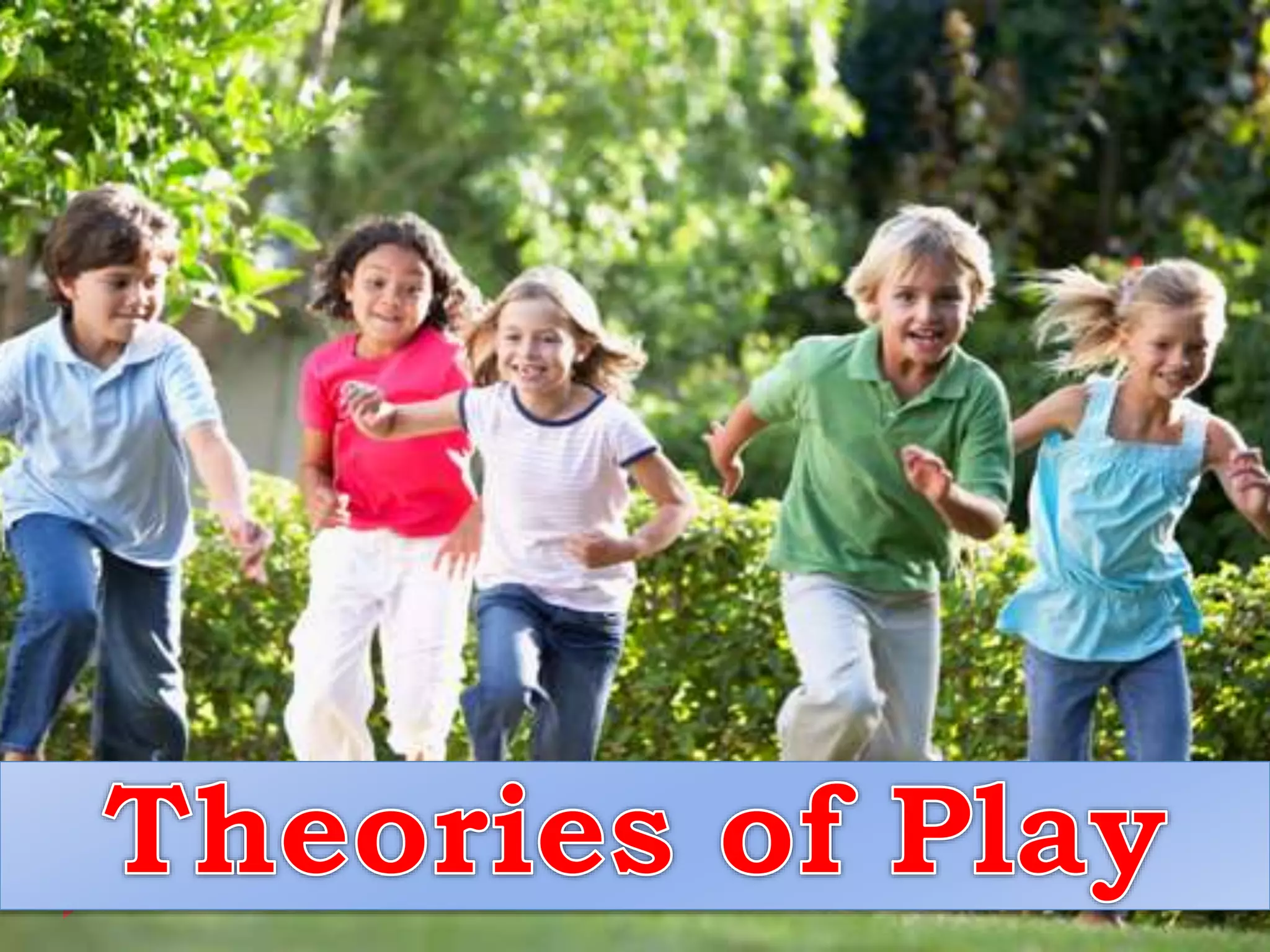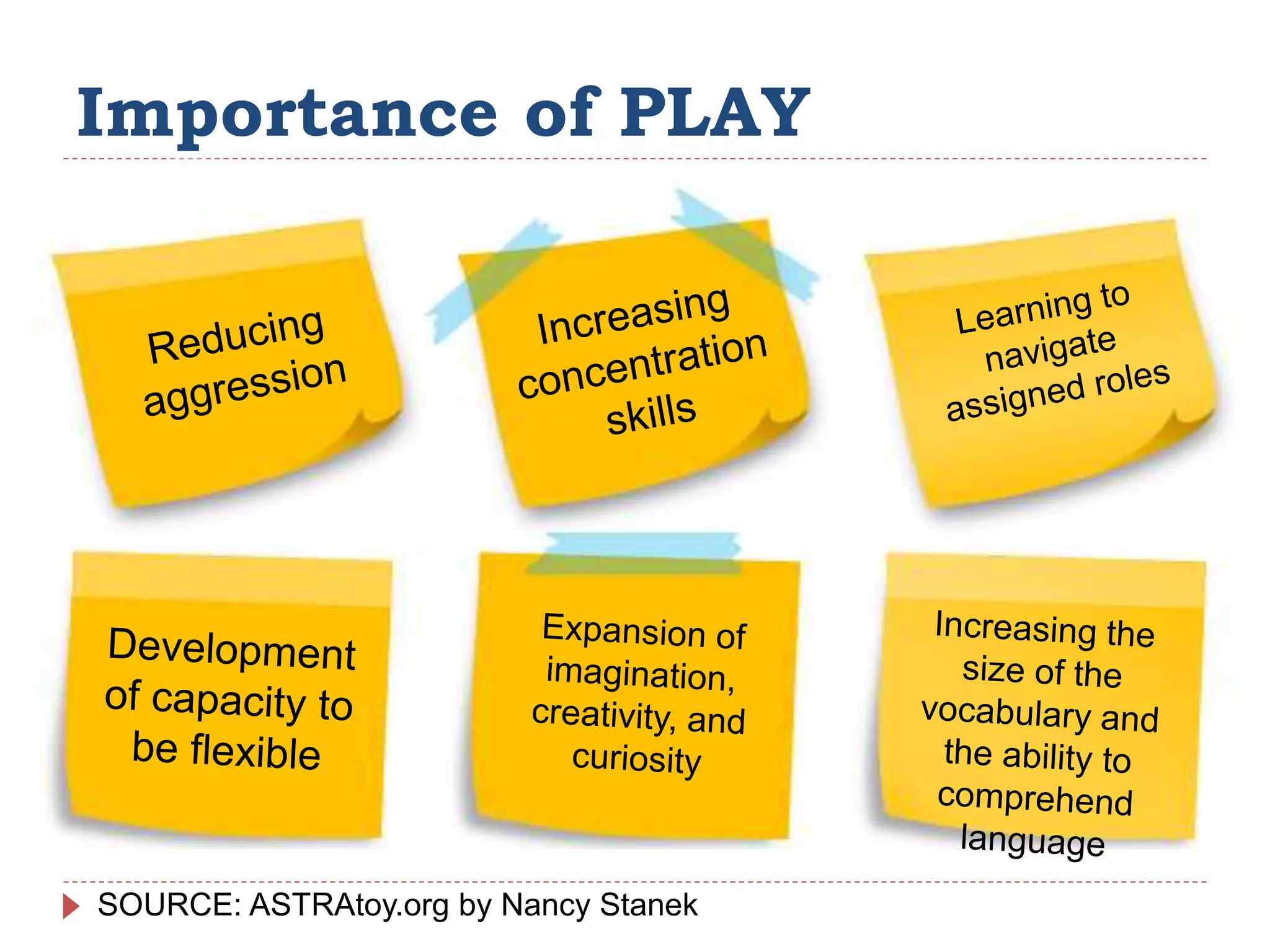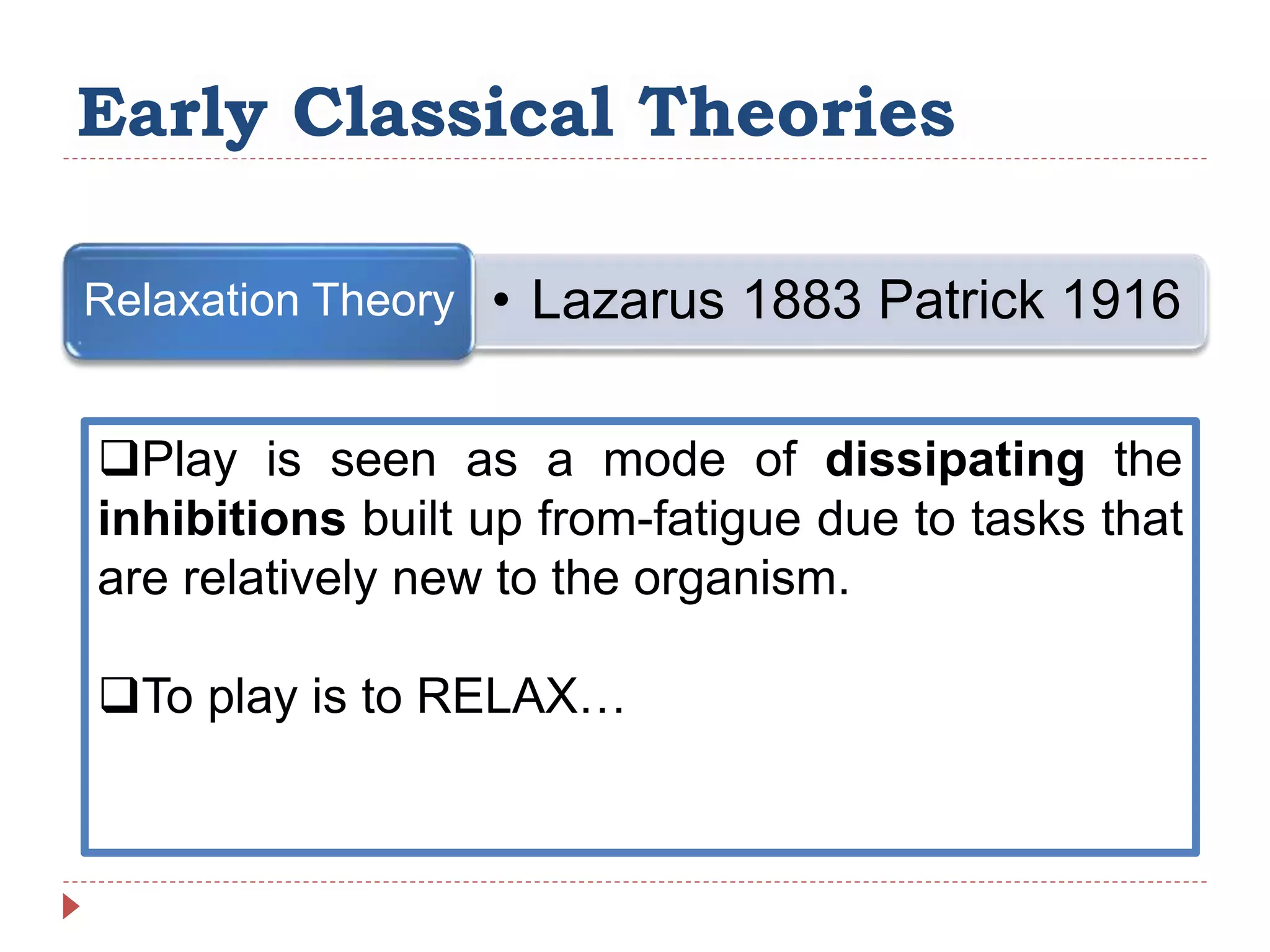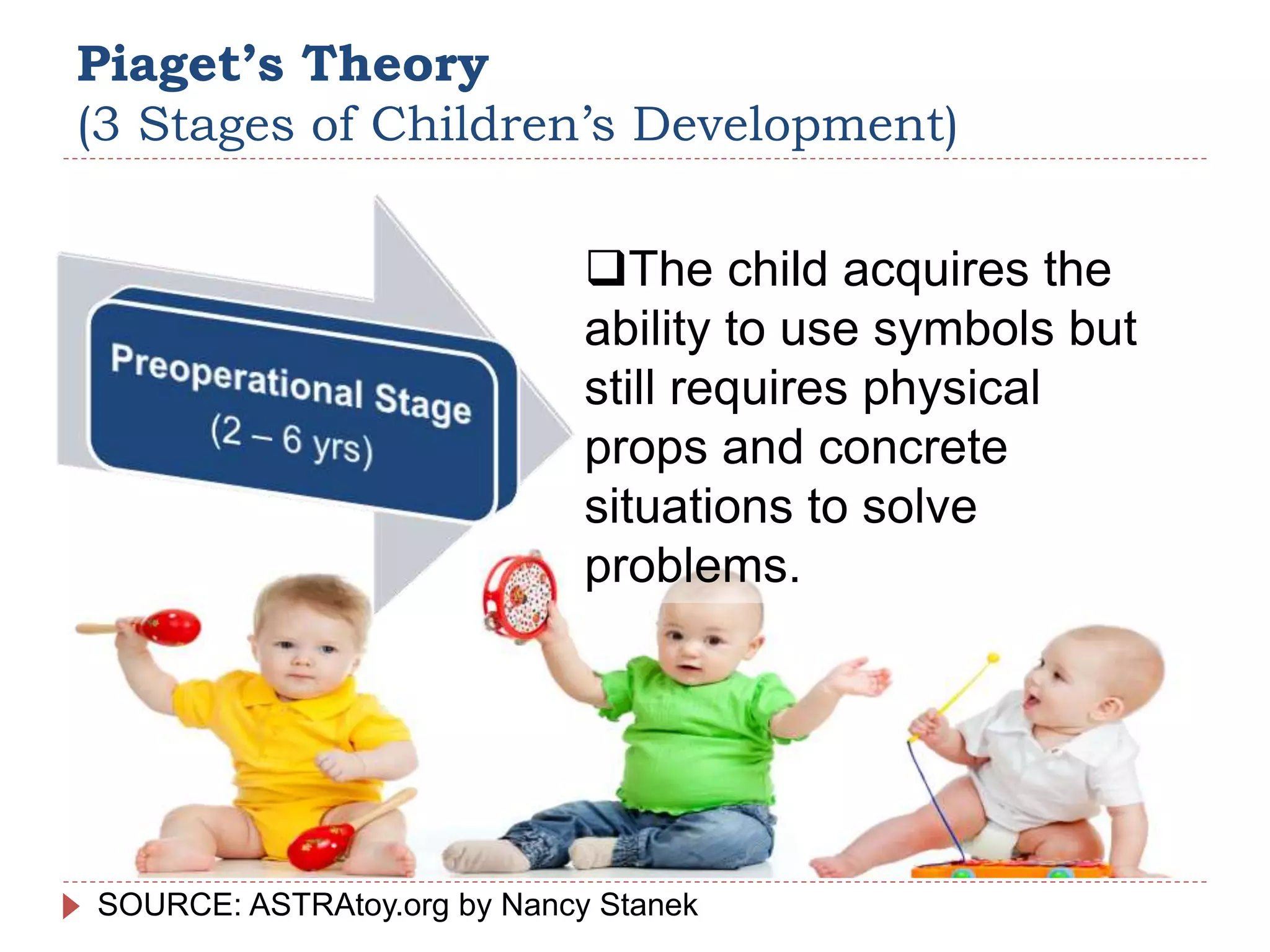The document discusses several theories of play from both classical and modern perspectives. Early classical theories viewed play as a way to release surplus energy (Spencer, 1875), relax from fatigue (Lazarus, 1883), or practice skills needed for survival (Groos, 1898). Modern theories see play as a way for children to work through drives or resolve conflicts (Freud, 1908), integrate new experiences (Piaget, 1962), or progress through stages from solitary to cooperative play (Parten, 1932). The document provides an overview of the developmental perspectives on the importance and purpose of play.





































